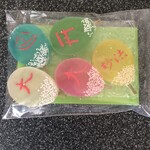
甘春堂 本店
Kanshundou
3.24
Tofukuji Area
「Japanese Sweets」
--
--
Opening hours: 9:00-18:00 Open Sundays
Rest time: Open all year round (except January 1 and 2) Business hours and holidays are subject to change, so please check with the store before visiting.
京都府京都市東山区上堀詰町292-2
Photos
(20)

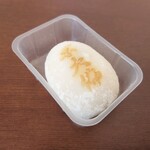
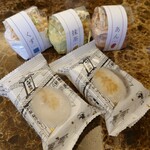
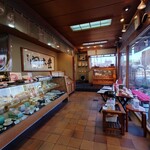
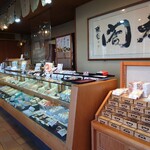

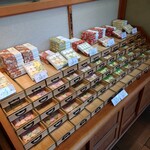
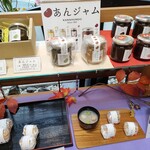
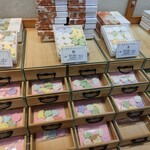
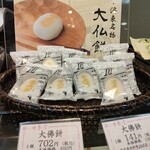
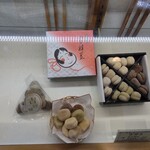
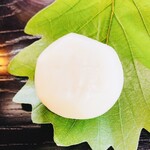
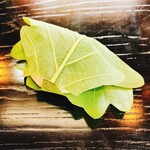
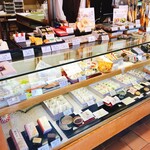



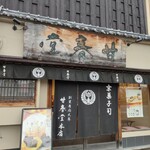
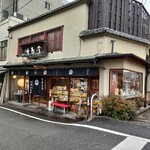
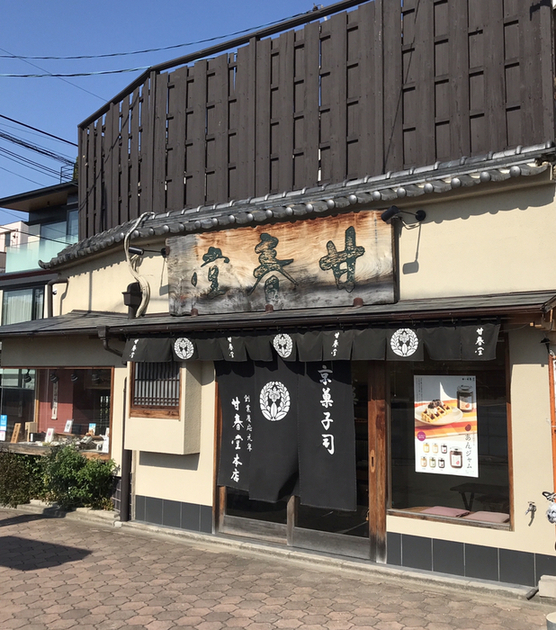
Details
Reservation Info
can be reserved
Payment Method
Credit cards accepted
Electronic Money Accepted
Number of Seats
(Specializes in take-out)
Private Dining Rooms
None
Smoking and Non-Smoking
No smoking at the table
Parking
Yes
5 units
Comments
(20)
なおかり
3.50
In early winter in Kyoto, I stayed at the Abita Hotel near Shichijo Station for one night. In front of the hotel is this shop. There are several shops with the same name in the city, but it seems that this one is the original of the original. On this day, I bought ◆Daibutsu Mochi 130 yen x 2 ◆Shiruko (Kuzu) 250 yen ◆Shiruko (Matcha) 250 yen ◆Shiruko (An) 250 yen, and so on. The specialty here is definitely the Daibutsu Mochi. It is a mochi made in imitation of the Daibutsu that used to be enshrined nearby. It is fluffy and chewy, with a softness like the buttocks of a baby. The sweet bean paste inside is not too sweet and very delicious. I paid with a regional coupon for travel support. Various electronic money can also be used. Thank you for the meal.



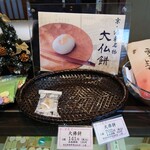
ママシズ
3.60
How about stopping by a delicious Japanese sweets shop in Kyoto while taking a stroll? It's a great shop. It's nice to purchase and enjoy while walking or maybe have it by the river. The sweet bean paste is truly delicious. The steamed buns were also delicious! It's definitely a perfect souvenir! It will surely be appreciated as a gift, so it's great! I would love to visit again when I'm nearby!
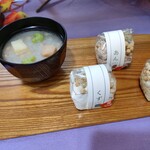

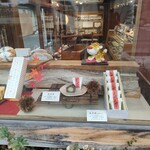
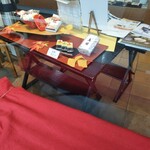
Akio I
3.50
I was walking along Kawabata Street by the Kamogawa River when I spotted a shop and decided to go in. It's located between Gojo Station and Shichijo Station, so there aren't many tourists in the area. The inside of the shop was clean with a few tables and chairs. They even had cold hojicha tea available. When I asked for a recommendation, they suggested the seasonal kashiwa mochi, which comes in different varieties. I chose the regular white miso filling instead of the sweet bean paste. The mochi was small in size. The miso filling was different from any kashiwa mochi I've had before, with a refined taste. I enjoyed it with cold hojicha tea. The bill came out to 238 yen. It was a simple and delicious snack. I only bought one, but they provided wet wipes as a service, which was nice.


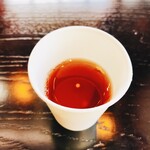

ミヤマヤ
3.60
I went on a quick trip to Kyoto and Shiga with my family. While walking from Higashi Honganji Temple to Sanjusangendo, we stumbled upon a shop around Shichijo. It was quietly located along the Kamo River. It seemed like an old established shop with a clean and new exterior. The location didn't seem ideal, facing a wide street with not many people passing by. Upon entering through the noren curtain, we found ourselves in a spacious shop. The display case showcased various traditional sweets, including a shelf dedicated to rakugan. There were also a few fresh sweets in the glass case, but the selection was limited. Most of the sweets were individually wrapped in paper. Intrigued by the chestnut steamed yokan displayed outside, we went in to look for it. However, the size was different from what I had imagined. I wanted to eat it there rather than as a souvenir. I found a smaller version that looked similar and purchased it. The packaging had the name of the sweet written on it, but the handwriting was too fancy to read. Let's just call it "Chojamochi" (refer to the photo). It cost 216 yen each. There was a small eat-in space in the corner of the shop, so we enjoyed our sweets there. It was nice to sit down and have tea with just one traditional sweet. The chestnut was whole and wrapped in steamed sweet bean paste, with a mild sweetness and very delicious. It wasn't yokan. We had been walking from the station and were starting to feel tired, so this break was very refreshing. The tea and sweetness were delightful. The Kyoto dialect of the staff added to the pleasant atmosphere. In a short time, we regained our energy to continue walking. It was a unique experience to walk on such a path, which I may never have the chance to do again. It was a quiet street where we hardly encountered anyone, more like a residential area where regular tourists might not visit. I realized that there are still many hidden gems in Kyoto. If I ever come back, I would definitely visit this shop again.
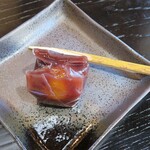
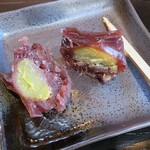


yossy1
3.50
Kanshundo Honten Kyoto is a long-established traditional Japanese sweets shop with multiple branches in Kyoto. They offer a variety of Japanese sweets suitable for celebrations, ceremonies, and gifts. Their sweets are not too sweet and easy to eat, making them popular for personal purchases as well. I find this shop very convenient and reliable!
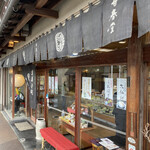
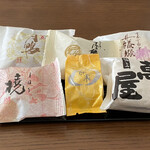
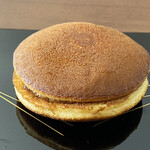
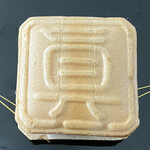
mforce
3.00
I visited the Kyoto National Museum to see the "Treasures of the Imperial Family" exhibition. Due to the impact of the coronavirus, there were noticeably fewer foreign visitors in Kyoto. I visited several traditional Japanese sweets shops. It was a weekday visit. Despite this, these famous shops were relatively bustling. The atmosphere of the shops harmonized well with the surroundings and had a charming feel. I bought several sweets and they tasted even better when enjoyed with delicious Kyoto tea.


肉ソンウーバー
3.40
During my trip to Kyoto, I visited Higashi Honganji Temple and then took a walk with a friend towards the Kamo River. Along the way, we stumbled upon a shop near Shichijo along the Kamo River that caught our attention. It's hard to put into words, but something about it just drew us in while we were waiting at a traffic light. The noren curtain at the entrance was very appealing, giving off a traditional Japanese confectionery shop vibe. Once inside, we were greeted by a faint sweet aroma. The shop had a display area and a small seating space, with the workshop visible in the back where they seemed to make the products they sold. When we asked the staff for recommendations, they suggested their most popular item, the Daibutsu Mochi priced at 120 yen. Although other sweets like rakugan caught our eye, we were already full so we stuck with the Daibutsu Mochi. The outer layer was soft and chewy, while the filling inside was subtly sweet red bean paste. It was delicious! Definitely a hit. I would recommend it as a souvenir, especially considering the affordable price. The only downside is the short shelf life, but at 120 yen, it's a great deal. The staff even served us tea, which was a nice touch. Overall, we left the shop feeling very satisfied. Thank you for the great experience.
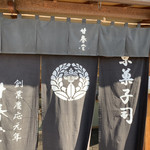
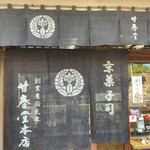
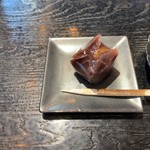

ハナコタの父
3.30
More of a corner store located in a residential area, this large shop has a new building with a traditional Kyoto atmosphere, complete with a large noren curtain. The interior is spacious and clean, offering a wide variety of traditional Japanese sweets such as wagashi, yokan, manju, dorayaki, and dried sweets. It can be overwhelming to decide what to buy with so many options available. Today, I am here at the request of my wife to buy the "Daibutsu Mochi" sweets she saw on TV. The shop is known for this particular sweet, which is named after the nearby Daibutsu statue built by Toyotomi Hideyoshi. The friendly female staff engage in casual conversation, sharing stories about the sweets featured on TV and providing directions to the Daibutsu statue. The Daibutsu Mochi is priced at 120 yen each, wrapped in plastic but placed in a bag with a picture of the Edo-period Daibutsu Mochi sales scene printed on it. The mochi is thick and chewy, with a satisfying texture and a sweet red bean paste filling. It is a simple yet delicious treat for mochi lovers. I also tried the "Chestnut Steamed Yokan" for 400 yen, which was wrapped in bamboo skin and had whole chestnuts inside, offering a soft texture with a hint of bitterness from the chestnut skins. Lastly, I received a complimentary vegetable senbei, which had pressed vegetables on the surface, adding a unique touch. After enjoying these treats, I made my way to the former site of the Daibutsu statue, which was a bit difficult to find without clear signage, but eventually, I reached the area and found it to be a small grassy field with a few visitors.

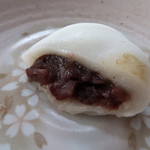

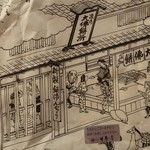
mangoman
3.50
The "干錦玉" sweets inspired by the Gion Matsuri festival's fire-lit mountains have a beautiful texture resembling wind chimes glass and a crunchy bite. This seasonal treat is a must-try.


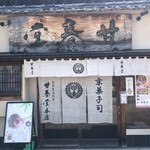
phlizz
3.60
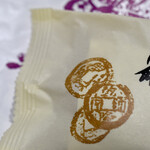
Koji25
3.50



Kanie
3.00
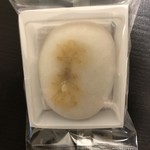
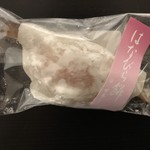
放浪犬ポテ
3.80
In Kyoto during early summer, traditional Japanese sweets such as Ayumochi and Mizuki are popular choices. I purchased both of these from a shop called "Kanshundo". First, let's talk about the Ayumochi. It is called "Wakaayu" and costs 185 yen, a bit on the pricier side. The outer castella cake layer has a firm texture, while the inside sweet bean paste is soft and has a mochi-like consistency. Moving on to the Mizuki, in Kyoto, on June 30th there is a ritual called Nagoshi no Harae, where people eat sweet bean paste to purify evil spirits and pray for good health for the next six months. Mizuki, shaped like a triangle, is said to resemble ice, as in the past, commoners couldn't afford ice and instead enjoyed the coolness of Mizuki. If you're curious to try Mizuki, it tastes like traditional rice cake. Additionally, on the 30th, Kanshundo offers Mizuki in black sugar and matcha flavors. Enjoy!

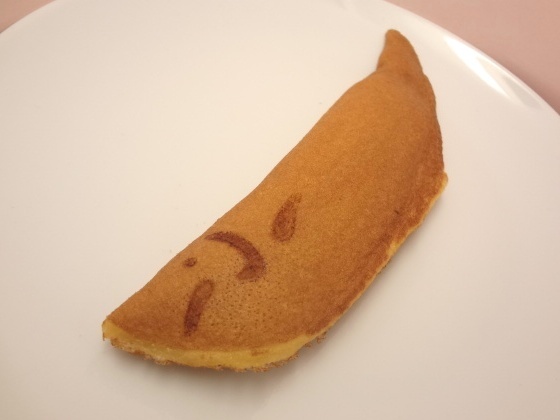
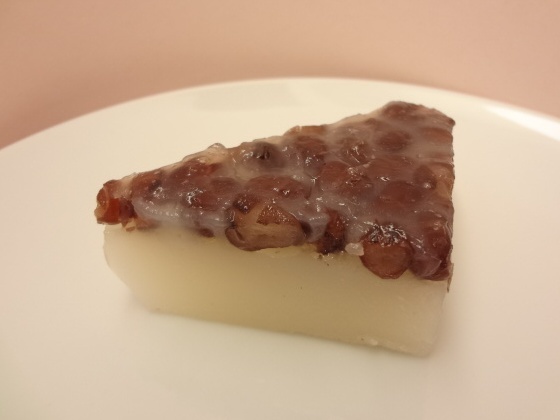
hawks-1
3.00
I love Kobe so much and often go there, but I also want to explore more in Kyoto through Tabelog. This time, I purchased the "Shihori" from Amashundo in Higashiyama-ku, Kyoto City. It is a round steamed bun with a cute brand mark, and the yellow bean paste inside is gentle and smooth. The sweetness has a richness to it, with the addition of egg yolk, rice syrup, and honey. It's satisfying.
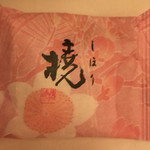
ブルーツリー
3.30
While walking along the Kamo River, I found a traditional Japanese confectionery shop. It seemed familiar, maybe it's also in the Isetan at Kyoto Station. The shop has a traditional Japanese atmosphere and is quite spacious. I visited at 11 AM. Their specialty seems to be "rakugan," and you can sample it in dishes made of rakugan inside the store. They offer about 7 types of fresh sweets that you can buy without a reservation. I bought the "aoume" for 378 yen. The outer layer of the sweet was firm, and the white bean paste inside was not too sweet. It seems that at the Higashi store, you can also experience making these sweets by hand. Enjoy!
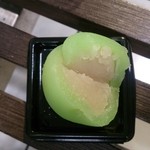

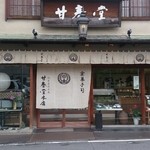
maido
3.70
On my recent visit to Kyoto, I stopped by one of my favorite traditional Japanese sweet shops, Amashundo. This time, I tried their dried sweets, which were in the shape of a tanuki made from rakugan and wasanbon sugar. The rakugan had a firm texture, while the wasanbon sugar melted in the mouth with a refreshing taste, similar to lemonade. Although I'm not a big fan of dried sweets, I really enjoyed the ones from this shop as they were elegant and delicious. The sweets came in a stylish box, and I also purchased star-shaped sweets called Hankintama, which were coated in sugar and had a jelly-like texture inside. They had a refreshing sweetness that paired well with strong green tea.
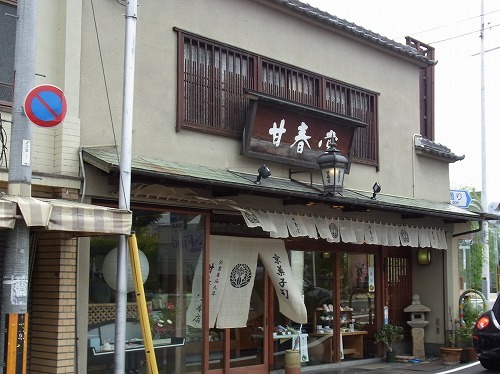
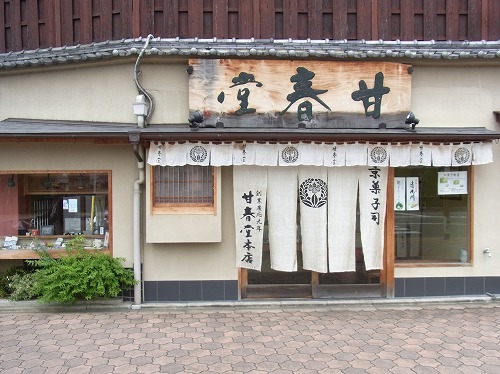
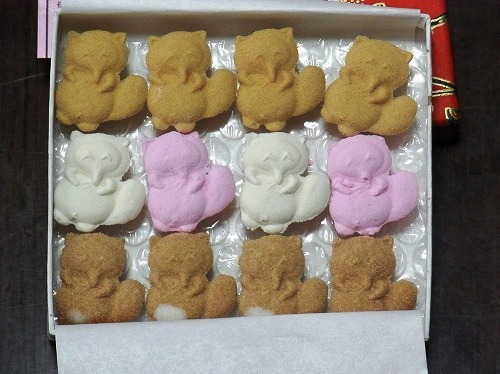

ぽろ
3.80
Before going to see the hydrangeas in Kyoto, I stopped by this shop. They have a parking lot. I bought some wagashi and dried sweets inspired by hydrangeas. I asked if I could leave my car there while I went to have matcha by the Kamo River, and the staff kindly agreed. I brought the hot water pot, matcha bowl, and matcha from my car, found a nice spot by the river, and made matcha. Before going to see the hydrangeas, I also enjoyed the hydrangea wagashi and dried sweets. The Kamo River was elegant, the sweets were delicious, and the staff were very helpful. I recommend this elegant takeout experience.
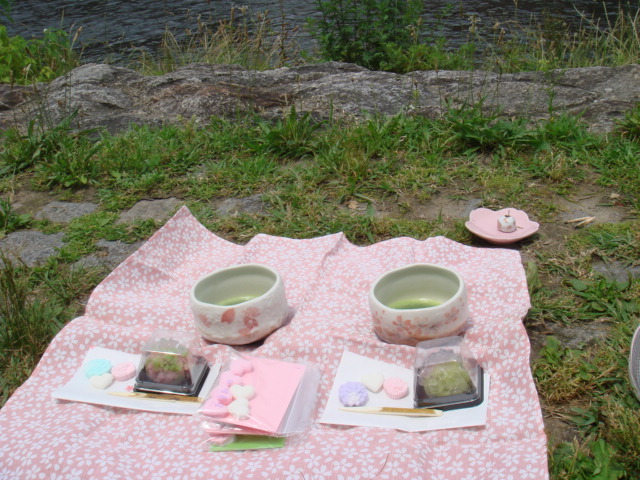
エガトモ
4.00
When it comes to Ganshundo, they are known for their traditional Japanese sweets like Rakugan, but their fresh sweets are also delicious. The Fu Manju and Warabi Mochi are irresistibly tasty. The Warabi Mochi, in particular, is famous, and I have tried many different kinds, but the one here literally "melts in your mouth" and is worth every penny at 500 yen. The staff at the shop were also very kind. When I went to buy some, they were sold out, but they went out of their way to bring some from another store. I planned to save the Warabi Mochi to enjoy as a souvenir at home and eat the Fu Manju on the way back in the car. However, when we finally ate it on the highway, my friends and I were so impressed that we all wanted to turn back and get more.
ツマジロ
0.00
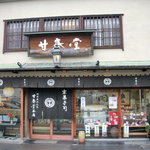
ラトゥール
0.00
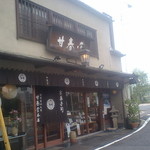
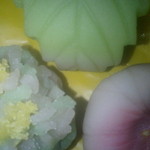
Email Login